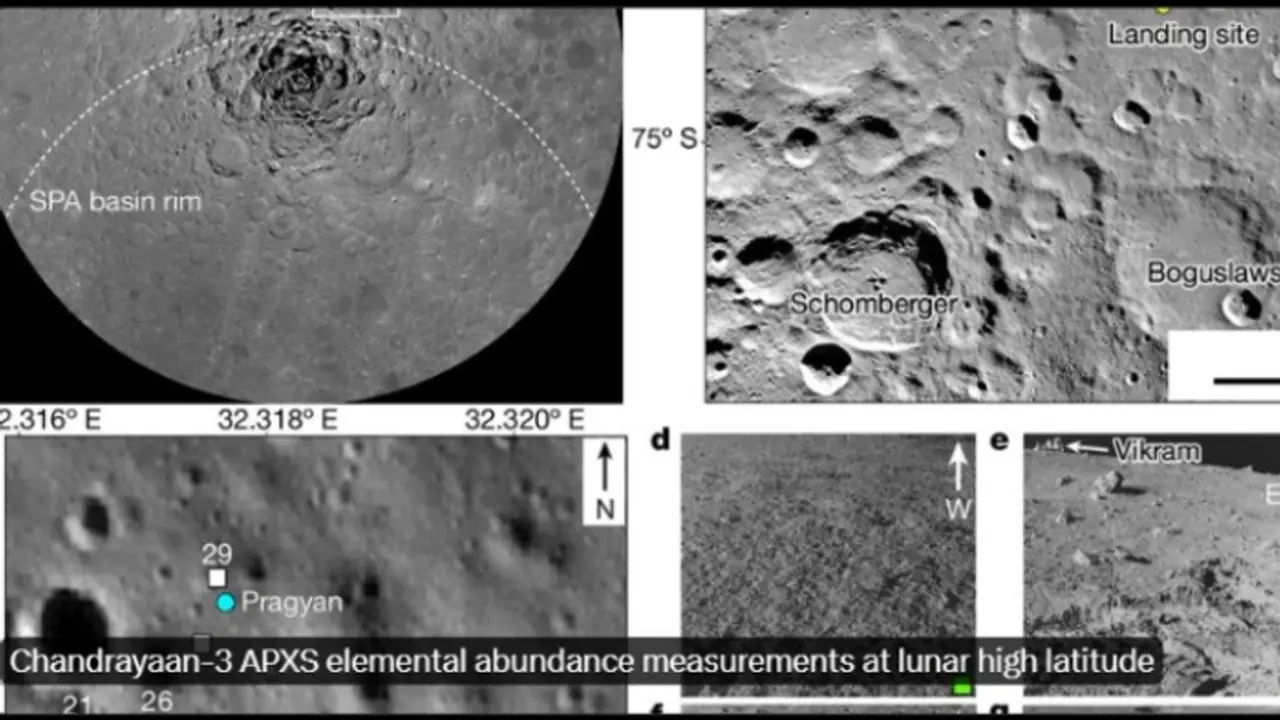Analysis of Chandrayaan 3's Pragyan rover data reveals a uniform elemental composition of the lunar regolith around the landing site, primarily consisting of ferroan anorthosite rock, further solidifying India's lunar exploration achievements.
On the eve of National Space Day, which commemorates the one-year anniversary of Chandrayaan-3's historic touchdown on the Moon's south pole, a fresh finding from the Pragyan rover's transmitted data has further bolstered the mission's accomplishments, marking another significant milestone in India's lunar exploration journey.

A team of scientists published their remarkable findings in Nature on August 21, utilizing data from the APXS instrument on the Pragyan rover. The PRL-developed APXS allowed researchers to analyze the elemental composition of lunar regolith at multiple stops. The study revealed evidence of a former magma ocean near the lunar south pole, a region never before explored.
According to this widely accepted hypothesis, the Moon was initially an ocean of magma when it formed. As the magma cooled, heavier minerals like olivine and pyroxene sank to form the Moon's inner layers, while the lighter mineral plagioclase floated and created the outer crust. The significant presence of ferroan anorthosite (FAN) in the soil, as observed by APXS, further validated the magma ocean hypothesis. However, the detection of additional magnesium-rich materials indicates that the outer crustal material has mixed with deeper layers of the Moon to form the soil near the Chandrayaan-3 landing site, the Shiv Shakti point.
The striking similarity in chemical composition between the regolith near the South Pole and soil samples from equatorial and mid-latitude regions provides additional evidence for this theory, suggesting a shared geological history across these diverse lunar regions.
Pragyan has provided new geological insights into the region. Within a 50-meter radius of the landing site, the terrain appears relatively smooth, with no noticeable craters or boulders. However, as the rover moved beyond this area, it encountered boulders likely thrown from nearby craters and observed formations along the edges of small craters, according to the study.
Analysis of 23 measurements taken at various locations within a 50-meter radius of the Chandrayaan-3 landing site revealed that the lunar regolith has a consistent elemental composition. This uniformity makes it an ideal "ground truth" reference for future remote sensing missions.
APXS used X-ray Fluorescence Spectroscopy and Particle Induced X-ray Emission techniques to detect and measure various major and minor elements in the lunar soil. It conducted two dozen scientific observations along the rover’s path, obtaining an X-ray spectrum at each location. The observation time at each site ranged from 20 minutes to 3 hours, depending on the mission plan, with a total observation duration of approximately 31 hours over the 10-day mission period.
India's Chandrayaan-3 wins prestigious World Space Award for historic lunar South Pole landing
